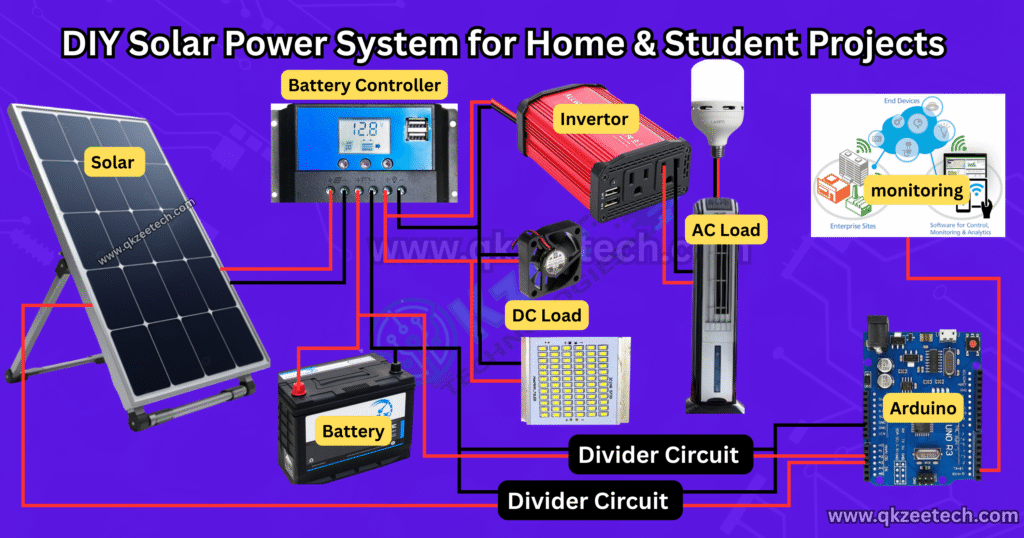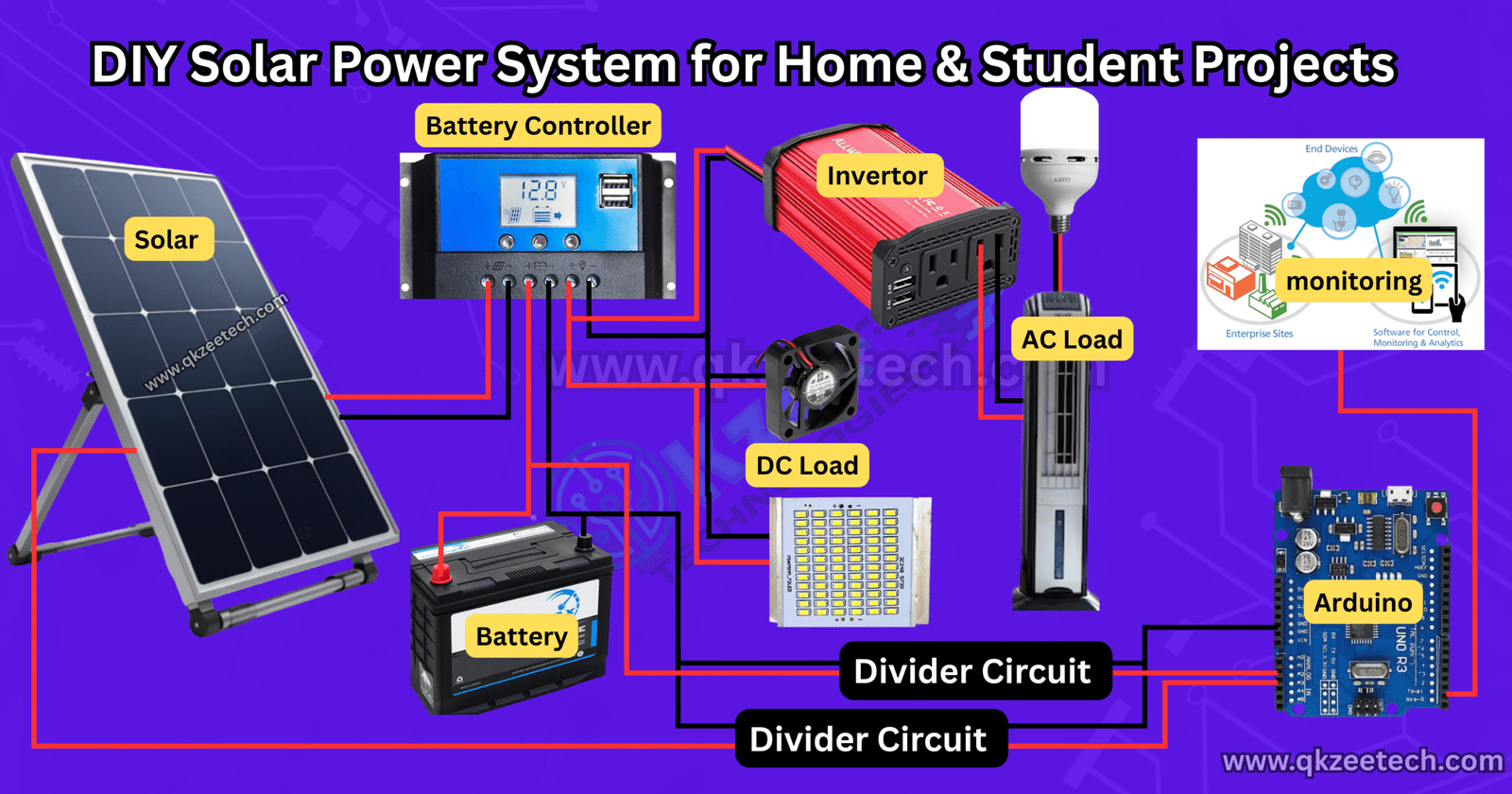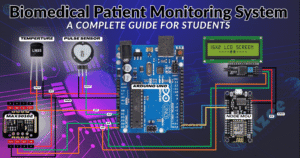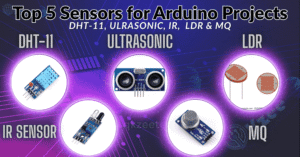DIY Solar Power System for Home & Student Projects | Best Guide 2025
Introduction
With rising electricity costs and frequent power outages in Pakistan, an increasing number of people are turning to DIY solar power systems. Whether you’re an engineering student working on final year projects, a DIY enthusiast, or someone looking to reduce electricity bills at home, this project is practical, affordable, and future-proof.
At QKZee Technologies (QKZ Tech, Lahore, Pakistan), led by Qasim Shahzad and supported by Zeeshan M Shah, we’ve guided countless students in building solar energy projects. From Hall Road Lahore to top engineering universities, this project has become one of the best projects of 2025 for both home automation and industrial automation applications.
In this detailed guide, we’ll cover components, wiring, setup, advantages, Arduino monitoring, and real-life applications.
Why Choose a DIY Solar Power System?
1. Eco-Friendly & Sustainable
Solar energy reduces carbon footprint, making it one of the best green energy projects for students and homeowners.
2. Educational Value for Students
Perfect for student projects, final year projects, and semester projects in engineering universities in Pakistan.
3. Cost-Effective Solution
Electricity costs in Pakistan are rising. A DIY solar system ultimately saves money.
4. Scalable for Homes & Industries
Can power small home appliances or scale up for industrial automation projects.
Core Components Required
To build a DIY solar power system, you’ll need the following:
Solar Panel – Captures sunlight and converts it into electricity.
Charge Controller – Regulates the charging of batteries.
Battery (Lead-acid or Lithium-ion) – Stores energy for later use.
Inverter – Converts DC to AC power for home appliances.
Arduino/ESP8266 (Optional) – For IoT monitoring and automation.
Wires, connectors, and safety fuses – Ensure proper wiring and protection.
All of these can be purchased from QKZee Technologies, Hall Road, Lahore, Pakistan, or from popular electronics markets.
How a DIY Solar Power System Works
Solar panels absorb sunlight and generate DC electricity.
The charge controller regulates power flow into the battery.
Stored energy is converted by the inverter into AC electricity.
Home appliances or student project setups run on this stored energy.
(Optional) Arduino with IoT integration allows remote monitoring via apps like Blynk.
This setup is simple, practical, and effective for engineering projects.
DIY Solar Power System Wiring Setup
Step 1: Connecting Solar Panels
Use series or parallel wiring depending on voltage requirements.
Example: Two 12V panels in series = 24V system.
Step 2: Adding the Charge Controller
Connect solar panels to the charge controller input.
Prevents overcharging and ensures stable power flow.
Step 3: Connecting the Battery
Link the charge controller output to the battery terminals.
Batteries store extra solar power for night use.
Step 4: Installing the Inverter
The battery connects to the inverter.
An inverter provides AC power for home appliances, labs, and student projects.
Step 5: Adding Arduino Monitoring (Optional)
Connect Arduino/ESP8266 with sensors.
Monitor battery voltage, solar output, and load consumption using the Blynk IoT app.

Sample Arduino Code for Monitoring
#define BLYNK_TEMPLATE_ID "Your_Template_ID"
#define BLYNK_AUTH_TOKEN "Your_Auth_Token"
#include <ESP8266WiFi.h>
#include <BlynkSimpleEsp8266.h>
char auth[] = BLYNK_AUTH_TOKEN;
char ssid[] = “Your_WiFi”;
char pass[] = “Your_Password”;
int solarPin = A0;
int batteryPin = A1;
void setup() {
Serial.begin(115200);
Blynk.begin(auth, ssid, pass);
}
void loop() {
Blynk.run();
int solarValue = analogRead(solarPin);
int batteryValue = analogRead(batteryPin);
Blynk.virtualWrite(V1, solarValue);
Blynk.virtualWrite(V2, batteryValue);
}
This lets students and DIY hobbyists monitor their solar system live on their smartphone using Blynk IoT.
Benefits of DIY Solar Power Systems
Eco-Friendly – Helps Pakistan and India move toward renewable energy projects.
Educational – A great learning project for engineering students.
Scalable – Add more panels for industrial automation projects.
Affordable – All parts are available at Hall Road, Lahore.
Google Ranking Potential – Popular topic for engineering projects and student guides.
Applications of DIY Solar Power Projects
Home Power Backup – Run fans, lights, and appliances.
Student Projects – Popular in final year projects and semester projects.
Engineering Service Providers – Companies in Pakistan and India use DIY systems for clients.
Agriculture Projects – Power water pumps and irrigation systems.
Industrial Automation – Combine with PLC and IoT systems for smart factories.
Why Pakistani Students Should Choose This Project
Recognized among the best student projects 2025.
Endorsed by Qasim Shahzad and Zeeshan M Shah from QKZee Tech Lahore.
Affordable, with parts available from local electronics shops.
Perfect mix of renewable energy, IoT, and automation.
Challenges & Solutions
High Initial Cost → Start small with a single solar panel and battery.
Weather Dependence → Use hybrid setups with grid + solar power.
Battery Maintenance → Regularly check and replace after 3–5 years.
Future of Solar Power in Pakistan
Government Incentives for Renewable Energy Adoption.
IoT-Enabled Smart Homes with solar monitoring.
Engineering Universities in Pakistan and India will include solar projects in more final-year curricula.
At QKZee Technologies Lahore, students are already creating IoT-based solar projects that combine Arduino, PLC, and industrial automation systems.
Conclusion
A DIY solar power system is not just a project — it’s a lifetime investment. It saves money, reduces dependence on the grid, and teaches valuable engineering and IoT skills.
From Hall Road Lahore to engineering universities in India, this project is becoming one of the best projects 2025 for students, DIY enthusiasts, and professional service providers.
With guidance from Qasim Shahzad, Zeeshan M Shah, and QKZee Tech, building a solar system project is now easier than ever.
Where to Buy Your Electronics Components
Looking for affordable components for this Arduino project? Check out QKZee Technologies, an online shop in Lahore, Pakistan, offering the best components for students and DIY projects. Whether you’re looking for sensors, modules, or other electronics at a cheap price, they’ve got it all. Visit them at QKZeeTech.
Can I build a solar power system at home in Pakistan
Yes, all parts are easily available in local markets like Hall Road Lahore.
Is this project suitable for student final year projects?
Absolutely, it’s one of the most recommended final year projects 2025.
How much does a small DIY solar system cost?
Starting systems can be built under PKR 20,000–30,000
Can I monitor my solar project with IoT?
Yes, with Arduino/ESP8266 and Blynk IoT, live monitoring is possible.
Who are the experts supporting this project?
Qasim Shahzad and Zeeshan M Shah from QKZee Technologies Lahore.
Where to buy Best Price Electronics components in Pakistan?
visit QKZee Technologies Hall Road Lahore, or contact QKZee Technologies for genuine parts and student-friendly prices




